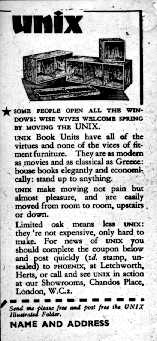

| Main index | Section 3 | Options |
#include <machine/sysarch.h>
If supported by hardware, each mapped user linear address has an associated 4-bit protection key. A new per-thread PKRU hardware register determines, for each protection key, whether user-mode addresses with that protection key may be read or written.
Only one key may apply to a given range at a time. The default protection key index is zero, it is used even if no key was explicitly assigned to the address, or if the key was removed.
The protection prevents the system from accessing user addresses as well as the user applications. When a system call was unable to read or write user memory due to key protection, it returns the EFAULT error code. Note that some side effects may have occurred if this error is reported.
Protection keys require that the system uses 4-level paging (also called long mode), which means that it is only available on amd64 system. Both 64-bit and 32-bit applications can use protection keys. More information about the hardware feature is provided in the IA32 Software Developer's Manual published by Intel Corp.
The key indexes written into the page table entries are managed by the sysarch() syscall. Per-key permissions are managed using the user-mode instructions RDPKRU and WRPKRU. The system provides convenient library helpers for both the syscall and the instructions, described below.
The x86_pkru_protect_range() function assigns key keyidx to the range starting at addr and having length len. Starting address is truncated to the page start, and the end is rounded up to the end of the page. After a successfull call, the range has the specified key assigned, even if the key is zero and it did not change the page table entries.
The flags argument takes the logical OR of the following values:
| [ AMD64_PKRU_EXCL] | |
| Only assign the key if the range does not have any other keys assigned (including the zero key). You must first remove any existing key with x86_pkru_unprotect_range() in order for this request to succeed. If the AMD64_PKRU_EXCL flag is not specified, x86_pkru_protect_range() replaces any existing key. | |
| [ AMD64_PKRU_PERSIST] | |
| The keys assigned to the range are persistent. They are re-established when the current mapping is destroyed and a new mapping is created in any sub-range of the specified range. You must use a x86_pkru_unprotect_range() call to forget the key. | |
The x86_pkru_unprotect_range() function removes any keys assigned to the specified range. Existing mappings are changed to use key index zero in page table entries. Keys are no longer considered installed for all mappings in the range, for the purposes of x86_pkru_protect_range() with the AMD64_PKRU_EXCL flag.
The x86_pkru_get_perm() function returns access rights for the key specified by the keyidx() argument. If the value pointed to by access is zero after the call, no read or write permissions is granted for mappings which are assigned the key keyidx(). If access is not zero, read access is permitted. The non-zero value of the variable pointed to by the modify argument indicates that write access is permitted.
Conversely, the x86_pkru_set_perm() establishes the access and modify permissions for the given key index as specified by its arguments.
| [EOPNOTSUPP] | |
| The hardware does not support protection keys. | |
| [EINVAL] | |
| The supplied key index is invalid (greater than 15). | |
| [EINVAL] | |
| The supplied flags argument for x86_pkru_protect_range() has reserved bits set. | |
| [EFAULT] | |
| The supplied address range does not completely fit into the user-managed address range. | |
| [ENOMEM] | |
| The memory shortage prevents the completion of the operation. | |
| [EBUSY] | |
| The AMD64_PKRU_EXCL flag was specified for x86_pkru_protect_range() and the range already has defined protection keys. | |
| PKRU (3) | February 16, 2019 |

| Main index | Section 3 | Options |
Please direct any comments about this manual page service to Ben Bullock. Privacy policy.
